In the given table, Column I shows masses of the objects, Column II shows the initial and final velocity of the object after force is applied on it and Column III shows the time span for which force is applied on the object.
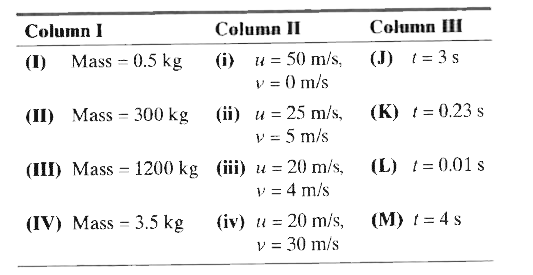
Conditions for a hammer with the force of 2500 N applied in opposite direction of motion are:
(I) (i) (L)
(III) (ii) (J)
(II) (ii) (K)
(III) (i) (M)
The correct Answer is:A, B
Topper's Solved these Questions
- FORCE AND MOTION - I BOOK - RESNICK AND HALLIDAYCHAPTER - FORCE AND MOTION - I EXERCISE - PRACTICE QUESTIONS (Integer Type)
3 Videos
- FORCE AND MOTION - I BOOK - RESNICK AND HALLIDAYCHAPTER - FORCE AND MOTION - I EXERCISE - PRACTICE QUESTIONS (Linked Comprehension)
10 Videos
- FLUIDSBOOK - RESNICK AND HALLIDAYCHAPTER - FLUIDSEXERCISE - PRACTICE QUESTIONS (Integer Type )
5 Videos
- FORCE AND MOTION-IIBOOK - RESNICK AND HALLIDAYCHAPTER - FORCE AND MOTION-IIEXERCISE - PRACTICE QUESTIONS (Integer Type)
1 Videos
Similar Questions
When force applied on an object causes it to moves in the direction of force
View SolutionIn the given table Column I shows the different values of masses of the body. Column II shows the different values of angular speed of the body and Column III shows the radius of circle in which the body moves.
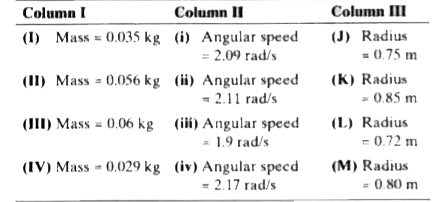
Which combination has 0.13N as the centrepetal force?
View Solution
Knowledge Check
In the given table, Column I shows masses of the objects, Column II shows the initial and final velocity of the object after force is applied on it and Column III shows the time span for which force is applied on the object.
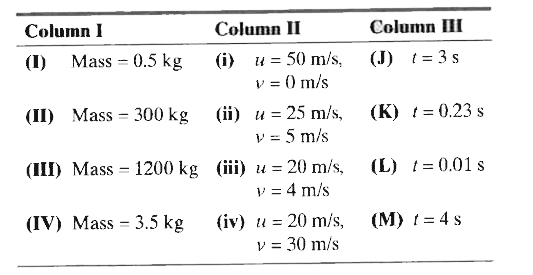
Conditions for a motorcar with the force of 6000 N applied in opposite direction of motion are :A(I) (iii) (L)B(II) (ii) (K)C(III) (ii) (M)D(I) (iii) (J)In the given table, Column I shows masses of the objects, Column II shows the initial and final velocity of the object after force is applied on it and Column III shows the time span for which force is applied on the object.
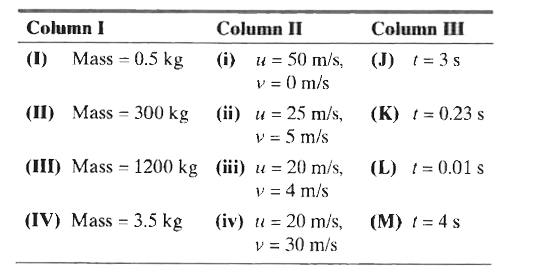
Conditions for a dumbbell with the force of 1000 N applied in same direction of motion are :A(III) (i) (L)B(IV) (i) (K)C(I) (iv) (M)D(II) (iv) (J)Two forces are simultaneously applied on an object. What third force would make the net force to point to the left ( -x direction ) ?
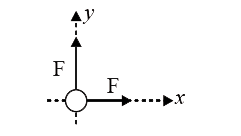 A
A B
B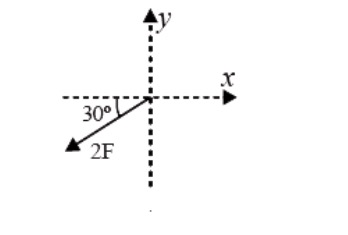 C
C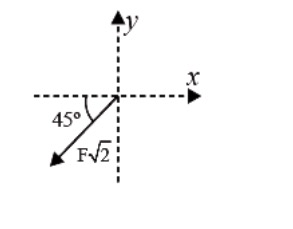 D
D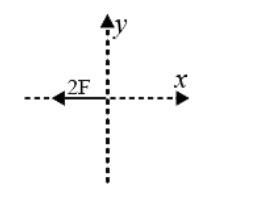
In the given table Column I shows the different values of masses of the body. Column II shows the different values of angular speed of the body and Column III shows the radius of circle in which the body moves.
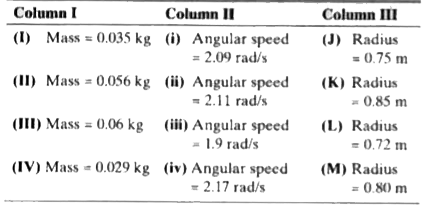
Which combination has 0.199N as the centrepetal force?
View SolutionWhen a force is applied on an object and if the body moves in the direction of applied force, work is said to be done.
View SolutionWhat happens when a force is applied in the direction opposite to the motion of an object?
View SolutionIn the given table column I shows the values of linear velocity. Column II shows the values of linear velocity, Column II shows the values of angular velocity and Column III shows the radius of the circle in which circular (angular) motion takes place.
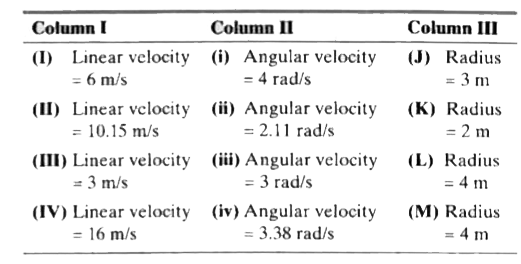
Which combination describes the conditions when body is displaced by 28 m in 4s and accelerates with 2m/s?
View SolutionTwo forces are simultaneously applied on an object. What third force would make the net force to point to the left ( -x direction ) ?

View Solution
